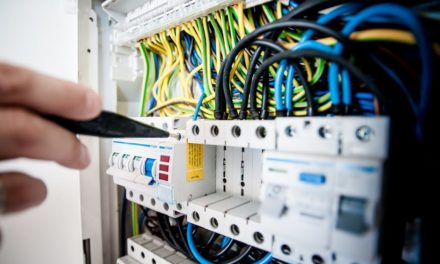In the fast-paced, adrenaline-fueled world of motor racing, every fraction of a second counts. The persistent pursuit of performance and safety has resulted in several technical improvements. However, the benefits of these innovations go well beyond the racetrack. They make their way into the automobiles that ordinary people drive. From materials and manufacturing techniques to safety systems and data analytics, racing technology has improved our daily trips by making them safer, more efficient, and fun.

One might wonder how the high-octane world of racing relates to the average driver’s daily experience. Consider the innovations in vehicle safety and efficiency that have been directly influenced by racing. For example, the anti-lock braking system (ABS), which is standard in most vehicles today, was first developed for racing cars. It’s a technology that allows for better control of the vehicle during abrupt stops, significantly reducing the risk of accidents. For those interested in the history and evolution of car technology, the auto auction of Harvey provides a unique opportunity to explore a wide range of vehicles, showcasing the practical applications of these racing-born advancements.
Safety First
Racing is inherently dangerous, pushing the limits of both humans and machines. Consequently, safety is a paramount concern, leading to innovations that have had a profound impact on everyday driving. Features such as crumple zones, roll cages, and advanced helmet designs have roots in racing. These features have been adapted for consumer vehicles, enhancing passenger protection in the event of a collision. Moreover, the use of high-strength, lightweight materials such as carbon fiber and titanium, once exclusive to the racing world, has become more widespread in the construction of consumer vehicles. These materials help reduce the overall weight of the car, leading to better fuel efficiency and performance, while also providing superior strength in the event of a crash.
Advancements in electrical systems and sensor technology, which were originally designed for motorsports, have made tremendous steps toward increasing passenger security. Electronic Stability Control (ESC) and Traction Control, which were developed on racetracks, are now standard features in many consumer vehicles. These technologies aid in vehicle control during extreme movements, lowering the danger of an accident. The use of modern sensor technologies, like as radar and LIDAR, which were initially used in racing to monitor vehicle performance and track conditions, has opened the way for the development of active safety systems such as automatic emergency braking (AEB) and adaptive cruise control. These features actively contribute to minimizing collisions and increasing driver awareness, demonstrating how racing technology continues to impact and improve the safety standards of everyday driving.
Performance Enhancements
Racing’s obsession with speed and efficiency has led to the development of more refined engines, aerodynamic designs, and fuel-saving technologies. Turbocharging, for example, was initially developed to boost the performance of racing cars but is now a common feature in many everyday vehicles, offering a balance of power and fuel efficiency. Similarly, advancements in tire technology, such as improved rubber compounds and tread designs, have been directly influenced by the demanding conditions of the racetrack. These developments have resulted in tires that offer better grip and longer wear for everyday drivers, improving safety and reducing the frequency of replacements.
Along with these advancements, the popularity of racing has contributed to the widespread use of complex transmission systems in consumer cars, like continuously variable transmissions (CVTs) and dual-clutch transmissions (DCTs). These innovations, which were inspired by the necessity for quicker and more effective gear changes in racing, offer smoother acceleration and improved fuel efficiency for daily use. Improved performance and efficiency are also a result of the incorporation of lightweight materials and cutting-edge production techniques that draw inspiration from racing. For instance, the engine and chassis components made of aluminum and composite materials lighten the car, improving handling, acceleration, and fuel efficiency. This illustrates how racing’s unrelenting quest for performance optimization influences and elevates driving for the general public, making driving contemporary cars more pleasurable and economical.
Electrifying Development
The push for sustainability in racing, particularly through Formula E and other electric vehicle (EV) series, has accelerated the development of EV technologies. Innovations in battery life, energy recovery systems, and electric motor efficiency developed for the racetrack are shaping the future of everyday electric vehicles. This has led to longer ranges, shorter charging times, and more reliable performance for consumer EVs, making them a more viable option for the average driver.
Improvements in temperature management systems for EV batteries and powertrains have been facilitated by the competitive nature of electric racing. Motorsport circumstances have led to substantial developments in efficient cooling systems, which are essential for sustaining performance and prolonging the life of electric components. Commercial electric cars are now using these improved thermal management systems to make sure they stay dependable and efficient even in demanding situations. Furthermore, regenerative braking technology—which is a must for racecars to transform kinetic energy back into electrical energy—has evolved into a distinguishing feature of contemporary EVs, improving their real-world driving range and energy efficiency. From the perspective of professional racing, electric cars are not only getting more environmentally friendly, but they are also pushing the boundaries of automotive technology and performance for general consumers.
Data-Driven Decisions
Data is king in the world of racing, with teams gathering and analyzing vast amounts of information to enhance performance and strategy. This data-centric approach has spilled over into consumer vehicles through features like GPS navigation, real-time traffic updates, and predictive maintenance alerts. These technologies, rooted in the data-driven strategies of racing, help drivers make more informed decisions, avoid congestion, and extend the lifespan of their vehicles.
Moreover, a better comprehension of vehicle health and behavior is made possible by the integration of advanced telematics and onboard diagnostics systems that were influenced by the data-intensive practices of racing. By keeping an eye on a variety of metrics, including engine temperature, fuel economy, and component wear, these systems give drivers fast information and alerts. This proactive approach to car maintenance, which is modeled after the painstaking observation observed in racing, helps keep little problems from getting worse, which lowers repair costs and downtime. Furthermore, the emergence of linked car technologies allows cars to get software upgrades and enhancements immediately, simulating the continuous software updates and optimizations found in race cars. This seamless integration of analytics and connection guarantees ongoing improvements and a more customized driving experience for the average driver, highlighting the significant influence of racing’s data-driven techniques on contemporary automobile maintenance and repair.
Accessibility and Affordability
While it’s true that some racing technologies are initially expensive and exclusive, competition and continuous development often lead to more affordable and accessible solutions. As these technologies become standard in consumer vehicles, the costs decrease, allowing more drivers to benefit from the advancements initially developed for the racetrack. Furthermore, automotive manufacturers often use their involvement in racing as a testbed for new technologies and materials before integrating them into consumer models. This direct lineage from track to street means that when you buy a car, there’s a good chance it includes technology that has been tested in the most demanding conditions imaginable.
Racing technology’s accessibility has also sparked innovation in manufacturing techniques, lowering the cost of producing cutting-edge systems and components for the general public. For instance, significant cost savings have been achieved in the development of carbon fiber production techniques, which was formerly an expensive undertaking exclusive to high-end racing. This has made it possible to use carbon fiber for increased strength and weight reduction in more affordable consumer vehicles. Similar to this, the need for excellent performance in racing has prompted the development of more affordable lithium-ion batteries, which has helped to lower the cost of electric vehicles for the general public. The advantages of racing-derived innovations are rapidly being incorporated into regular cars as manufacturers scale this technology for wider markets. This results in improved performance, safety, and sustainability without the premium price tag. Modern technology is becoming a normal feature for drivers all over the world thanks to the continuous transfer of knowledge and technology from the racetrack to public roads, which is exemplified by the competitive spirit of motorsports.
Final Thoughts
Racing technology and regular driving continue to benefit from each other more and more. For the daily driver, what begins as a quest for the checkered flag yields real advantages. Racing has a lot to offer the world of daily driving, from improved safety features and performance gains to environmental sustainability and data-driven comforts.
Thus, keep in mind that your car contains a portion of the racetrack the next time you buckle up. Racing technology is more accessible than you may imagine, whether it’s in the anti-lock brakes that keep you safe, the effective turbocharger that drives your commute, or the advanced materials that make up the body of your automobile. The distinction between the racetrack and the daily commute is becoming more and more hazy as the automobile industry develops, demonstrating how beneficial it is for all of us to be in the race for better cars.




